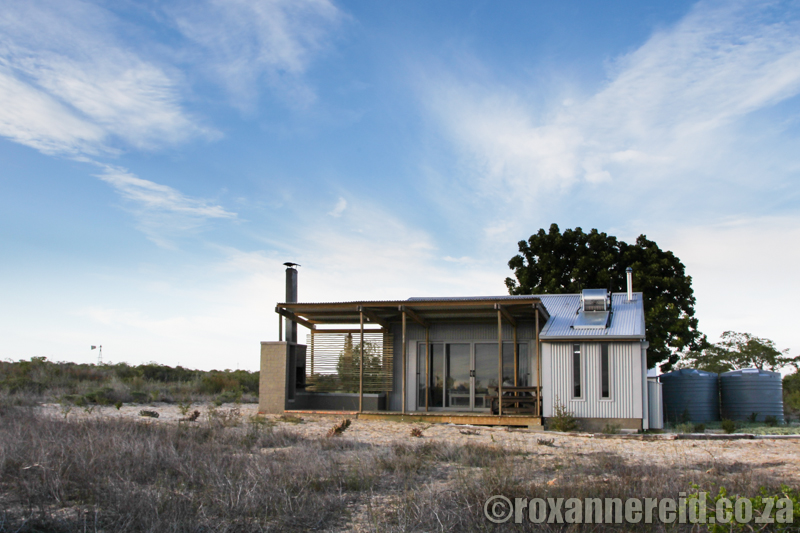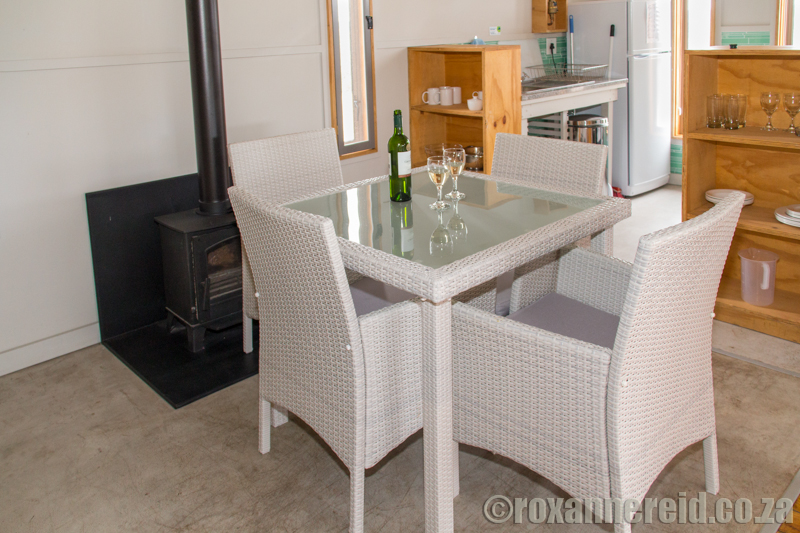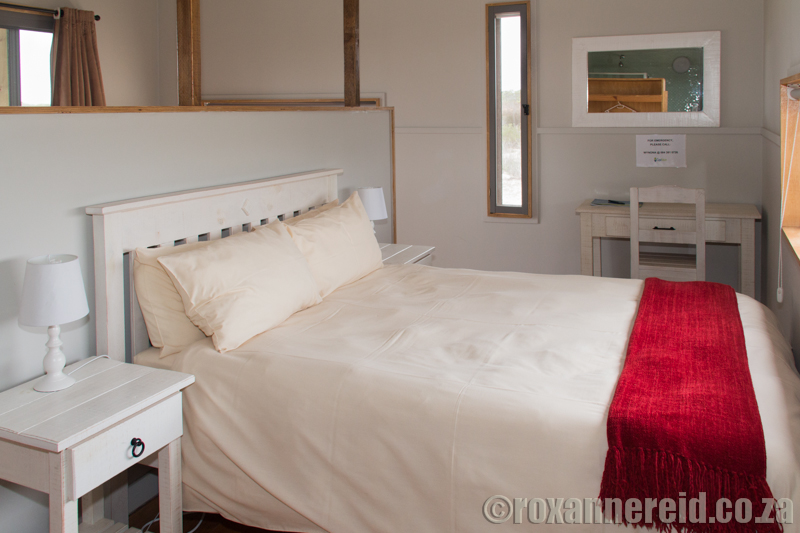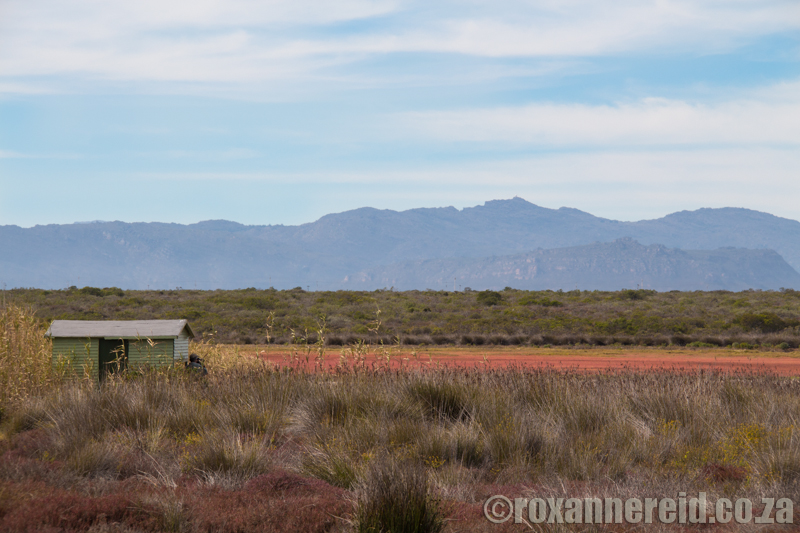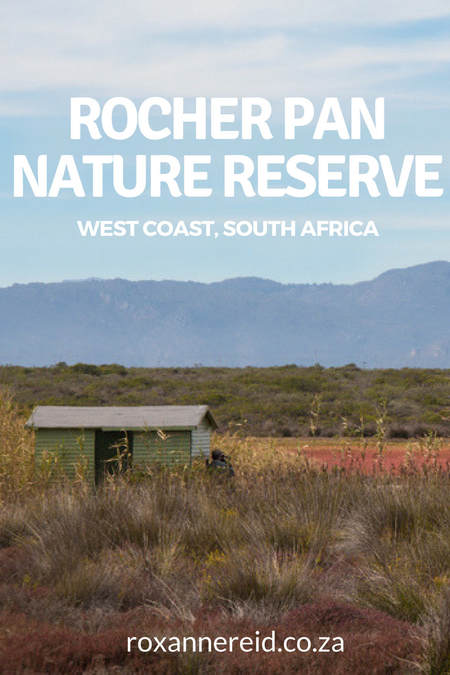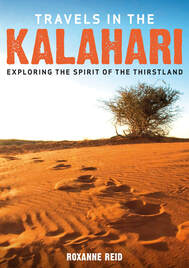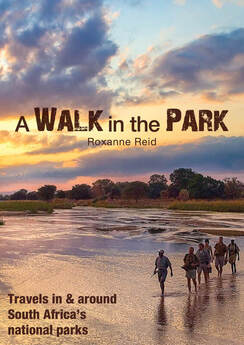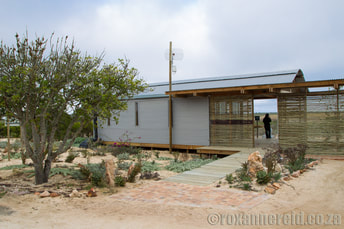
If you love nature and the outdoors, and you’re looking for a peaceful weekend getaway from Cape Town, try these things to do at Rocherpan Nature Reserve, West Coast. Last time we went was years ago and on our recent visit we were impressed with the changes that have happened since then.
But for us the main destination was Rocherpan; we wanted to stay over in the new chalets we’d heard so much about.
If you were more energetic, you could also hike or go mountain biking along the nature reserve’s jeep tracks.
If you’re not big into birds, don’t bother going to Rocherpan, right? Wrong! Although birding is a draw card to this nature reserve near Velddrif on the Cape West Coast, it’s by no means the whole story.
1. Stay in the eco-cabins
Treading lightly in this Saldanha Flats Strandveld and wetland are four eco-cabins opened in August last year. You’ll find everything you need, including an outdoor braai, indoor fireplace and fully equipped kitchen (with microwave nogal). We stayed in Flamingo cabin and would sit on the comfy couch or on the patio staring out at the pan, the clouds or the birds and enjoy watching the sun set – with very little to obstruct our view. Four larger 4-6 sleeper cabins are closer to the pan.
2. Go birding
Yes, it’s a great place for keen birders, with 194 species recorded, 21 of them threatened. On our visit in autumn (mid-April), the seasonal pan was bone dry so there were no water birds or waders; to see flamingos and pelicans, you have to visit when the pan has water. But the winning combination of land, sea and vlei meant we could still busily tick bush birds like robins, weavers, mousebirds, crombecs and larks, and sea birds like terns and gulls. A coastal special is the African black oystercatcher. The pan dries up around February/March, depending on the rains, but starts filling again in about May. This 100-hectare pan is usually at its fullest in June and July. From then until it starts drying up again, the two bird hides along the western shore of the pan come into their own and you can enjoy hours of close-up twitching.
3. Hike the trail
Walk the 9km circular hiking trail that starts near the eco-cabins and goes right around the pan. At the far end of the pan you have two options: you can either walk back to the starting point along the western edge of the pan, or you can go over the dune and come back along the beach. It’s up to you whether or not you want to get your toes wet in the icy waters.
4. Walk on the beach
If a 9km trail sounds like too much, drive past the bird hides and Flamingo Point to The Lookout on top of a dune. Park your car and take a stroll along the beach, as wild and beautiful a stretch as you could wish for. Except for gulls, cormorants and terns, we had it entirely to ourselves. You can also get to the beach from the track behind the first bird hide.
5. Saddle up
If you prefer to be in the saddle rather than on your feet, take your mountain bike and ride the jeep tracks of the reserve. From the entrance, there’s a super track along the western edge of the pan all the way to The Lookout and the beach.
6. Look and learn
When we were there in April the tiny info centre was closed for upgrading, but it should reopen within about three months. For now, you can learn about pink flashers, cocky tail swivellers and rustling reedy restaurants from the info plaques in the bird hide.
7. Spot the animals
Keep your eyes peeled for the endemic angulate tortoise and other creatures like duiker, steenbok and African wild cat. There are also porcupine, caracal and aardvark in the reserve, though you’re unlikely to see those during the day. (If you come between June and September, you may even spot southern right whales from the dunes.)
8. Enjoy a lazy picnic
There are two picnic sites on the reserve, one between the bird hides on the pan’s edge and the other at The Lookout, where you’ll get a panoramic view out to sea. In keeping with the eco-friendly ethos of the reserve, the picnic tables and benches are made from recycled plastic.
9. Take a day drive
Rocherpan makes a perfect base for visits to other areas, such as Velddrif (about 15 minutes to the south), where we saw hundreds of flamingos and pelicans. The Cederberg wilderness area is also within reach for a day of swimming, hiking or mountain biking. Or take a drive to Bird Island at Lambert’s Bay, a breeding colony for seabirds like Cape gannets and cormorants. You may even see a Cape fur seal or three.
Need to know
Where: 23km north of Velddrif on the West Coast, about 2.5 hours from Cape Town.
Reservations: Tel 087 087 9262 or https://booking.capenature.co.za/
Like it? Pin this image!
